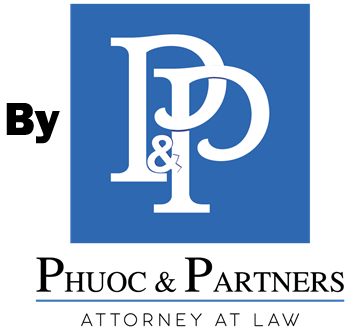
Stages Of Debt Recovery in Vietnam
In the production and business process of enterprises, the occurrence of bad debts is inevitable. Depending on the capacity and conditions of each enterprise, the debt collection methods and procedures will be different.
In reality, debt collection for enterprises is not easy and can lead to a decline in business capacity, lack of capital and many legal risks. In addition, enterprises also struggle with debt management and collection due to problems from the debtor side, due to not understanding the effective debt collection process or due to not understanding the provisions of the law. Therefore, the article with the topic “Stages of debt recovery in Vietnam” based on our experience in consulting and resolving similar cases, will help readers, especially enterprises, to approach and find a process suitable for the practical situation of each enterprise to ensure the effective and quick debt recovery.
I. Debt management of enterprises

Before proceeding with debt collection, one of the first steps in “Stages of debt recovery in Vietnam” is debt management. This is understood as the process of controlling and coordinating activities related to the debt collection process of an organisation or enterprise. Normally, the Finance Department/Accounting Department/Human Resources Department/Legal Department will be in charge of the debt management and collection process. The main mission in this stage is to monitor and record all cooperation and business transactions; store and collect documents related to the transactions and evaluate and count debts to ensure the stable financial situation of the enterprise.
II. Stages of debt recovery in Vietnam
Depending on the business cooperation, debt collection of each enterprise also has differences and there cannot be a common formula applied to all enterprises. In general, “Stages of debt recovery in Vietnam” include 3 steps: (i) Identifying and evaluating debt; (ii) Planning and implementing debt collection; (iii) Evaluating and improving the debt collection process.
Below are some of our analyses for each “Stages of debt recovery in Vietnam” for enterprises to consider and apply:
1. Identifying and evaluating debt
This is considered the most important step in the “Stages of debt recovery in Vietnam”. Because determining the debt of a certain party is considered a prerequisite for businesses to grasp the amount of debt to be recovered and consider implementing an appropriate debt collection plan. Accordingly, businesses need to monitor, compare, and review the debt including penalties and/or late payment interest of debtors. Normally, this will be done periodically, weekly/monthly depending on the requirements of each enterprise to avoid or minimize the maximum risk of mistakes and data errors.
After identifying the debt, the enterprise evaluates the risk level of each debt to the business operations and production situation of the enterprise. Some classification criteria that enterprises often apply are: debt value, overdue debt period, payment capacity, customer group, etc. Each debt can be classified into different risk groups, from low to high, and corresponding recovery measures therefrom are applied. Debt assessment reports will be the basis for building solid financial plans, helping enterprises optimise resources and minimize losses.
2. Planning and implementing debt collection
Considered the most difficult and challenging stage in “Stages of debt recovery in Vietnam”, planning and implementing debt collection is always the top concern of every enterprise.
(i) Planning
After obtaining the results from debt identification and assessment, the enterprise creates a debt collection plan. This action requires the enterprise to be careful and detailed to ensure that the debt collection process is carried out in an organised and effective manner.
Enterprises need to determine debt collection targets for each subject. This target will be considered based on the financial situation of the enterprise and the debtor’s recovery potential for each debt. In addition, enterprises need to set a specific and reasonable deadline for debt collection corresponding to each action at each time. For each debt, enterprises need to designate personnel responsible for collection, helping to ensure that there is continuous monitoring and communication with the debtors. Finally, enterprises consider and agree on the appropriate collection method for each specific case.
(ii) Implementing debt collection
In “Stages of debt recovery in Vietnam”, this is the most difficult stage for each enterprise. Because the implementation of debt collection plans is affected by many factors, including considering the financial capacity of the enterprise, the cooperative relationship between the parties, the ability to pay, and the value of the debt. Normally, enterprises tend to go from “gentle” measures such as communication, reminders, negotiations, and bargaining to “strong” measures such as filing a lawsuit or seeking legal intervention from competent state agencies in Vietnam. In the initial stage of debt collection, enterprises can consider implementing some of the following plans:
- Negotiation: Enterprises can use communication methods such as email, text messages, and phone calls to work with the debtor. If the debtor still does not make any payment after that, the enterprise should proactively arrange a direct meeting with the debtor to discuss issues related to the debt.
- Sending a letter of demand for payment:: A written request for payment is an appropriate method to demonstrate both a soft and firm attitude of the enterprise, and is also the basis for the enterprise to proceed, determine the statute of limitations for filing a lawsuit and create an advantage in providing evidence at competent state agencies.
- Applying security measures (guarantee, mortgage, deposit, etc): This option is applied to transactions of large value or when the enterprise assesses the debtor’s ability to repay is not high.
- Filing a lawsuit: This is considered the last resort to be applied in the “Stages of debt recovery in Vietnam” when the debtor is unable to pay the debt or is unwilling to pay the debt. Although filing a lawsuit to collect debt can be time-consuming and costly in preparing the lawsuit documents, the intervention of the judicial authority has a strong impact on the debtor’s attitude, helping to promote the debt collection process for the enterprise. However, it should be noted that the measure of filing a lawsuit to collect debt at the judicial authority should only be applied after (i) the enterprise has implemented other settlement measures with the debtor but failed and (ii) the enterprise has all the necessary and relevant legal evidence for the judicial authority to consider and accept its lawsuit request. Therefore, in the process of filing a lawsuit and resolving disputes at the judicial authority, the enterprise should consider hiring a lawyer to advise, support and represent it.
- Filing for bankruptcy against debtor: According to regulations, unsecured creditors and partially secured creditors have the right to file a petition to open bankruptcy proceedings when the enterprise or cooperative fails to fulfil its payment obligation within 03 months from the due date of the debt. Before choosing this option, enterprises should note that the debtor’s assets will be divided in the order prescribed by law and unsecured debts will be considered for final payment.
3. Evaluating and improving the debt collection process
To complete the “Stages of debt recovery in Vietnam”, enterprises need to conduct an assessment of the entire debt collection process. This includes reviewing the success rate, average time, and costs associated with the debt collection process. This analysis helps identify the strengths and weaknesses of the debt collection process, thereby helping businesses optimise their resources and debt collection strategies.
From the information collected, the enterprise will analyse, evaluate and implement improvements in debt collection processes and business policies, as well as business strategies for each customer group of the enterprise. This improvement process needs to be continuous, where processes and policies are always updated to reflect business and market realities to create a flexible, effective debt management system, improve debt collection efficiency, minimize bad debts, and maintain good relationships with customers. At the same time, this ensures that the debt collection process is synchronised with the overall business goals and strategies of the business..
The above is an overview of Stages of debt recovery in Vietnam. If you have difficulties in finding a Law Firm to advise and support in the relevant legal field, please contact us. Phuoc & Partners is a professional consulting firm established in Vietnam and currently has nearly 100 members working in three offices in Ho Chi Minh City, Hanoi and Danang. Phuoc & Partners is also rated as one of the leading consulting firms specialising in business law in Vietnam that has leading practice areas in the legal market such as Labour and Employment, Taxation, Merger and acquisition, Litigation. We are confident in providing customers with optimal and effective service.

